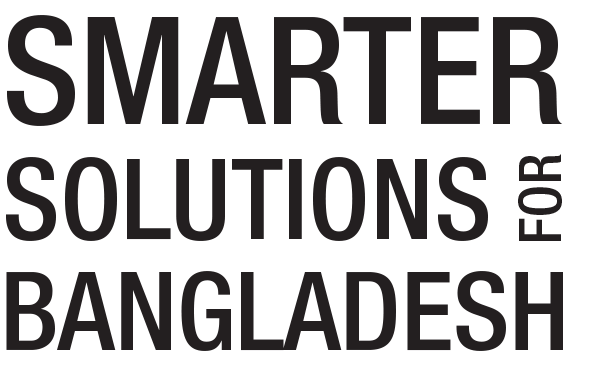Using smarter stoves to combat household air pollution
by Bjorn Lomborg
When it comes to cooking indoors over open fires, the harmful health effects can be equal to smoking two packs of cigarettes a day. This indoor air pollution plagues nearly nine out of every 10 Bangladeshi households, which use wood and other biofuels to cook inside.
Over time, exposure to smoke from indoor cooking leads to deadly diseases such as lung cancer, stroke, and heart disease. This is why it’s the most deadly environmental problem in the world. In Bangladesh, such indoor air pollution is responsible for 10-15 percent of all deaths.
It may seem obvious to say that we need to focus on cutting household air pollution. But such policies compete with many other potentially beneficial proposals for how to use scarce resources from the national budget or international stakeholders.
So what are the very best policies? This is what the Bangladesh Priorities—a cooperation with BRAC and dozens of the world’s top economists—promises to help answer.
Our research suggests two principal ways to help decrease deadly air pollution inside the home: People could either burn the same biofuels that most Bangladeshi households currently use, but with smarter cookstoves that emit much less pollution, or they could change to liquefied petroleum gas (LPG), which burns much more cleanly.
The cheapest way to quality indoor air is to get widespread investment in an improved biomass cookstove. This is simply an enclosed stove, often with a chimney, that reduces heat loss, protects against the wind, and transfers heat to a cooking pot more efficiently than traditional stoves or open fires. It burns the fuel—often biomass—more effectively and hence with less pollution. In Bangladesh, the cost of such a stove with two burners and a chimney that will last three years is about Tk 1,000 per year. This is both to cover the aggregate that needs replacement every third year, as well as some maintenance. And almost a third of the cost goes to promoting awareness of the opportunity in the first place.
But the benefits are many. If all 30 million households switched to improved cookstoves, it would save more than 33,000 lives each year. Each life will live on average another 28 years, which is worth about Tk 79 billion—or Tk 2,600 per household each year. Moreover, each family will get slightly fewer sick days, worth another Tk 260.
But the families would also save 15 minutes per day in cooking time, because the improved cookstoves are faster, and because less fuel is needed, it will reduce fuel collection time by half each day. In total, that benefit is worth another Tk 2,000. For each Tk 1,000 spent on a better cookstove, a family will get almost Tk 5,000 in health and time savings benefits: every taka spent will do 5 takas of good.
This is an important step to improve household air quality. But it still leaves most of the problem in place—we will “only” save 33,000 of 150,000 deaths each year.
That is why we could consider a more thorough option. LPG burns very clean—almost like an electric stove. Adoption of these stoves would produce much higher benefits: it would save 91,000 lives, a total value of Tk 218 billion, or Tk 7,300 per household. It would also avoid some 700 takas of disease per household, speed-up cooking by 40 minutes, and save all fuel collection time, at a net worth of Tk 5,200.
But, the cost of LPG is also significantly higher. It would cost about Tk 10,000 each year, plus Tk 2,000 in cooking fuel costs. In total, you would pay about Tk 12,000 for about 12,000 in benefits. So spending on LPG stoves would not be a loss, but only one taka back on the taka.
This shows that the best option can actually be an enemy of the good. Cheaper options, despite helping less, can be a much better way to help everyone. In the long term, however, the more expensive options can be solutions. Many countries at similar income levels as Bangladesh have adopted modern cooking fuels such as LPG at substantially higher rates.
| Strategy | Takas of benefits per taka spent |
|---|---|
| Liquefied petroleum gas cookstoves | 1 |
| Biomass cookstoves | 5 |
But there are challenges to implementing smarter stoves. With some prior efforts, it has proven difficult to get households to adopt new stoves. And widespread adoption is crucial given the community-based nature of fighting air pollution. If not everyone in a community adopt improved cookstoves, there would be more local air pollution leading to fewer benefits.
Well-targeted information campaigns about the benefits of cleaner cookstoves could help spread the message about their benefits, and projects should also tailor stoves to customers’ preferences. And, ideally, households would be allowed to pay for stoves over the course of multiple installments, making them more affordable.
Last week you saw how poverty policies can help do 2 takas of good for each taka spent. Making cookstoves cleaner can help fight household air pollution with about 5 takas of good for every taka spent. Are these some of the best investments for Bangladesh? Let your voice be heard on copenhagen.fbapp.io/indoorairpriorities. Let’s start the conversation about where Bangladesh can do the most good.
Dr. Bjorn Lomborg is president of the Copenhagen Consensus Center, ranking the smartest solutions to the world’s biggest problems by cost-benefit. He was ranked one of the world’s 100 most influential people by Time Magazine.
This article was originally posted in The Daily Star.


